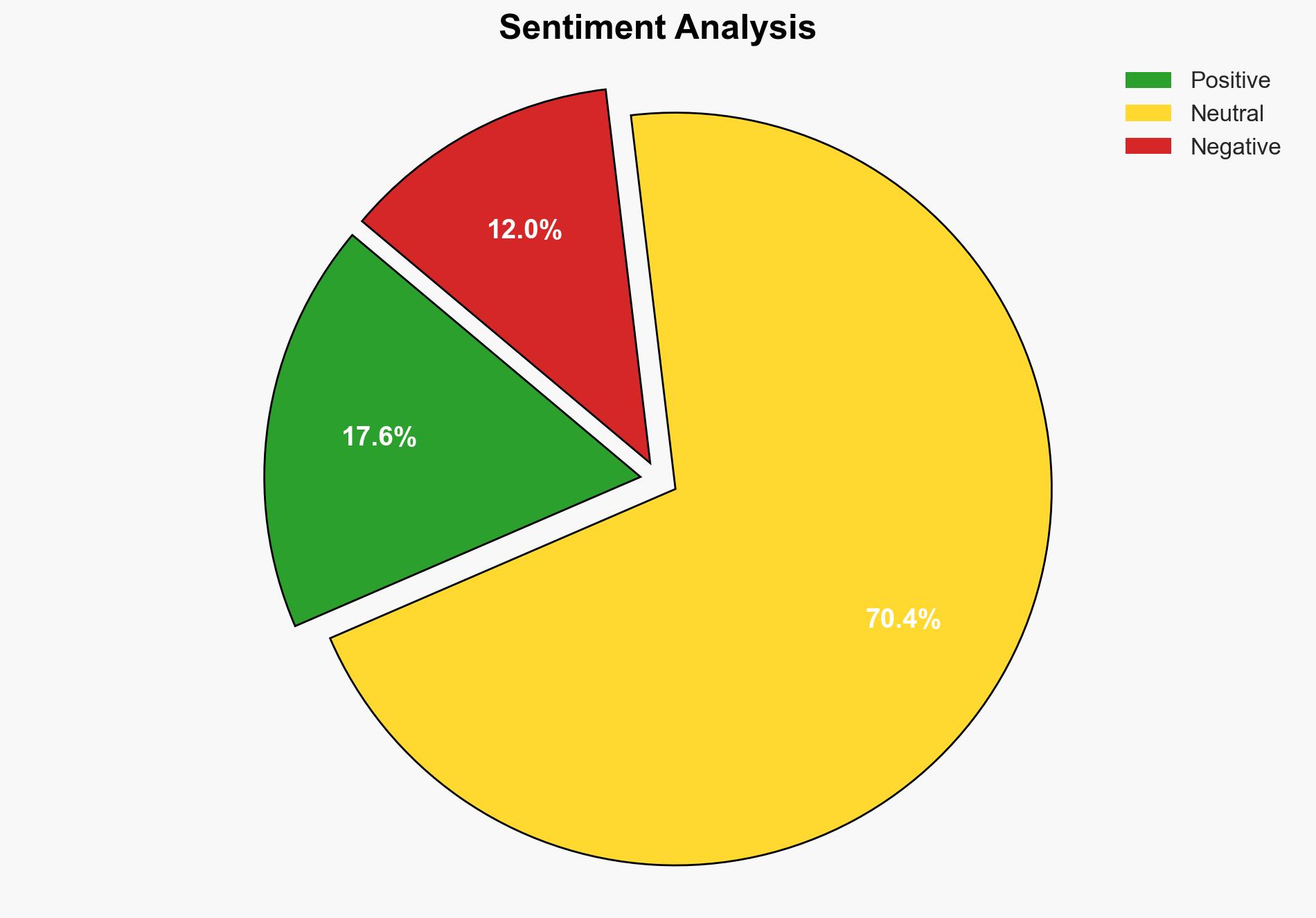Guess whos back Kaspersky launches new Linux antivirus for 5999 – TechRadar
Published on: 2025-11-14
AI-powered OSINT brief from verified open sources. Automated NLP signal extraction with human verification. See our Methodology and Why WorldWideWatchers.
Intelligence Report: Guess who’s back Kaspersky launches new Linux antivirus for 5999 – TechRadar
1. BLUF (Bottom Line Up Front)
The launch of Kaspersky’s new Linux antivirus software appears to be a strategic move to diversify and sustain its market presence amidst geopolitical pressures and sales bans in several countries. The most supported hypothesis is that Kaspersky aims to leverage the niche Linux market to maintain revenue streams and technological relevance. Confidence Level: Moderate. Recommended action: Monitor Kaspersky’s market penetration and geopolitical responses to its new product offerings.
2. Competing Hypotheses
Hypothesis 1: Kaspersky is launching the Linux antivirus to diversify its product line and mitigate the impact of sales bans in Western markets.
Hypothesis 2: The launch is primarily a public relations strategy to demonstrate resilience and innovation, countering negative perceptions due to geopolitical tensions.
Hypothesis 1 is more likely due to the tangible product offering and alignment with Kaspersky’s historical strategy of market adaptation. Hypothesis 2, while plausible, lacks direct evidence of PR-centric initiatives accompanying the launch.
3. Key Assumptions and Red Flags
Assumptions: Kaspersky’s Linux antivirus will find a viable market despite Linux’s small market share. The geopolitical climate will not further deteriorate to completely isolate Kaspersky from global markets.
Red Flags: Increased scrutiny or new sanctions from Western governments could further limit Kaspersky’s operational capabilities. The product’s compliance with GDPR suggests an attempt to align with European standards, possibly to counteract existing bans.
4. Implications and Strategic Risks
The launch could provoke further geopolitical tensions, particularly if Western governments perceive it as an attempt to circumvent existing bans. Economically, Kaspersky may face challenges in achieving significant market penetration due to Linux’s limited user base. Cyber risks include potential exploitation of the software by threat actors, given Kaspersky’s controversial standing in some countries.
5. Recommendations and Outlook
- Monitor geopolitical developments and regulatory changes that could impact Kaspersky’s operations.
- Engage with cybersecurity communities to assess the reception and technical evaluation of Kaspersky’s new product.
- Best-case scenario: Kaspersky successfully captures a niche market, stabilizing its revenue streams.
- Worst-case scenario: New sanctions or bans further isolate Kaspersky, reducing its global market presence.
- Most-likely scenario: Kaspersky maintains a limited but stable presence in non-Western markets, with moderate success in the Linux segment.
6. Key Individuals and Entities
Kaspersky Lab (Entity)
Tom Shardware (TechRadar Contributor)
7. Thematic Tags
Cybersecurity, Geopolitics, Market Strategy, Linux, Kaspersky
Structured Analytic Techniques Applied
- Adversarial Threat Simulation: Model and simulate actions of cyber adversaries to anticipate vulnerabilities and improve resilience.
- Indicators Development: Detect and monitor behavioral or technical anomalies across systems for early threat detection.
- Bayesian Scenario Modeling: Quantify uncertainty and predict cyberattack pathways using probabilistic inference.
Explore more:
Cybersecurity Briefs ·
Daily Summary ·
Support us
·





